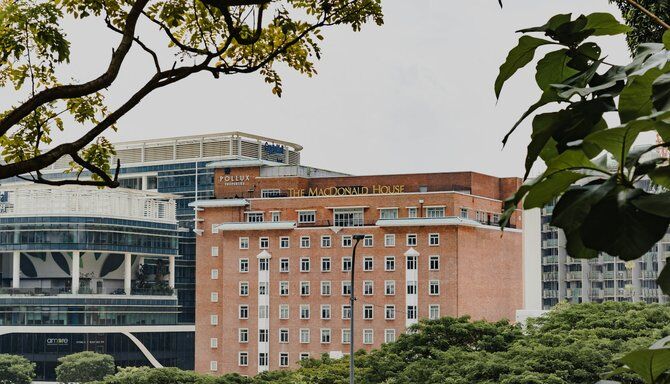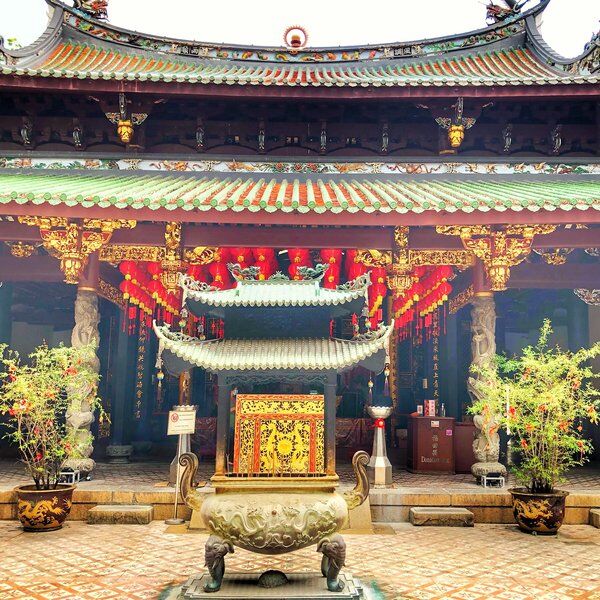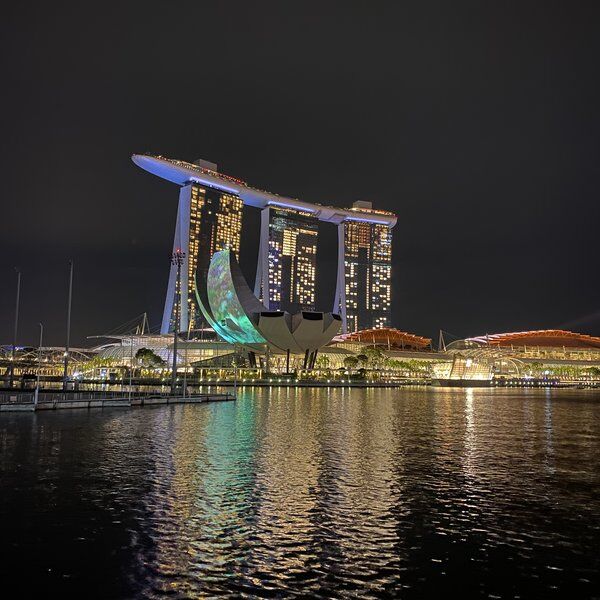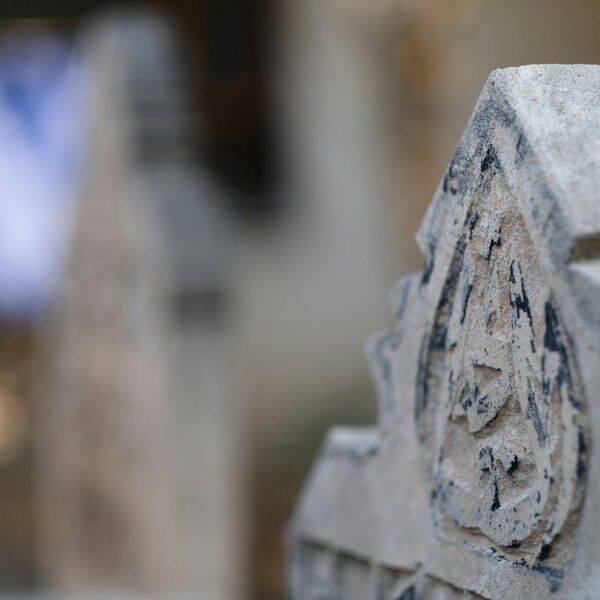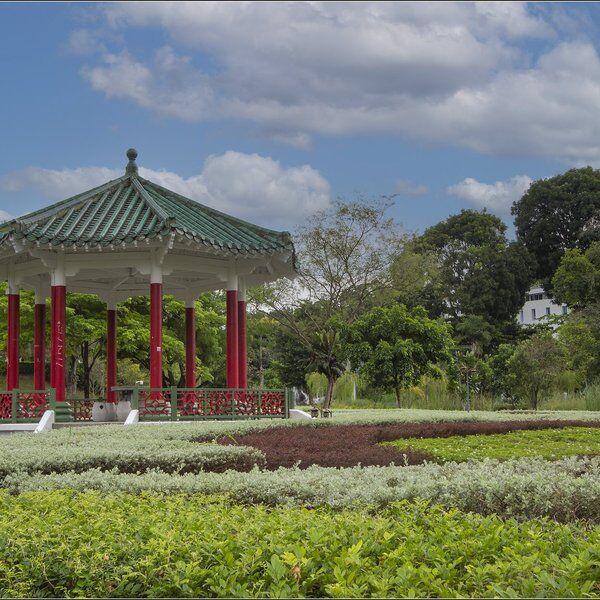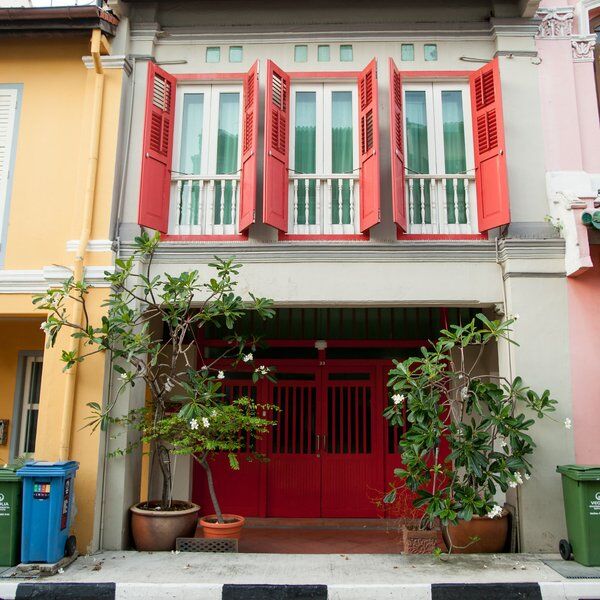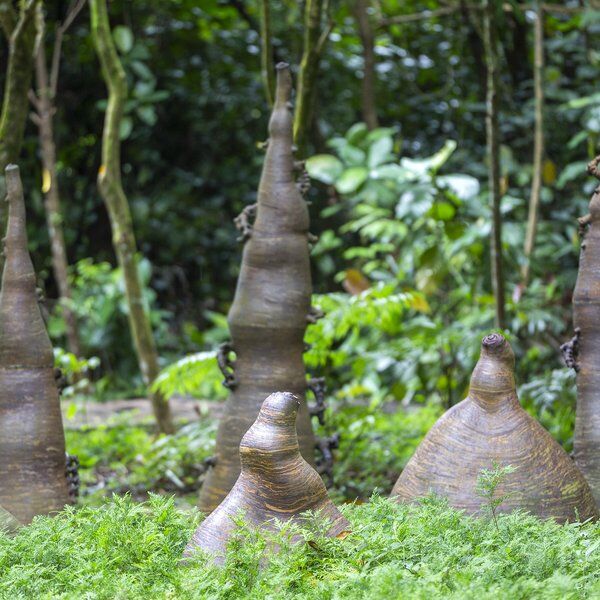Discover Macdonald House
MacDonald House, on Orchard Road, Singapore, contains a wealth of history that has been wrapped up in a fairly plain and nondescript packaging. Completed in 1949, it symbolises optimism for a bright post-war future, in light of Japan’s surrender in 1945. However, despite hopes for its positive representation that’s not why MacDonald House has endured lasting fame. In fact, it is remembered for a more sinister occurrence; a bombing attack on 10th March 1965, during the Indonesia–Malaysia Konfrontasi.
MacDonald House: Purpose and Creation
Architectural Design
MacDonald House was designed by Reginald Eyre of Palmer & Turner, the same architectural firm behind the Bank of China building in Raffles Place. The building’s iconic white window frames, two tall marble columns, and red brickwork, adorned with 279,000 sand-faced bricks from Alexandra Brickworks, is a nod to its Neo-Georgian design preference. Whilst the straight lines, reinforced concrete, white window frames, and perpendicular edges are a characterisation of Modernist architecture.
After its completion the building’s 10 storeys – capped off with a flat roof showcasing green glazed Chinese tiles – meant that it was one of the tallest buildings in Singapore. The result of its specific design was a departure from traditional architectural norms of the time that would have featured impressive caps and ornate bases. And so today, MacDonald House is recognised as a symbol of Singapore's post-war urban development.

The Building’s Purpose
MacDonald House was named after Malcolm John MacDonald, Governor-General of Malaya, whose wife laid the building’s foundation stone in 1948. The building’s purpose was to become the new branch office of the Hongkong and Shanghai Banking Corporation (HSBC), which opened for business on 4th July 1949. In a revolutionary feat, MacDonald House played a pioneering role in introducing full-building air conditioning to Southeast Asia.
While HSBC is no longer occupying the space MacDonald House proudly displays the bank's emblem, embodying the United Kingdom's royal coat of arms, Chinese junks, and two projecting balconies with HSBC monograms. And the old night safe near the entrance serves as a nostalgic reminder of its banking history.
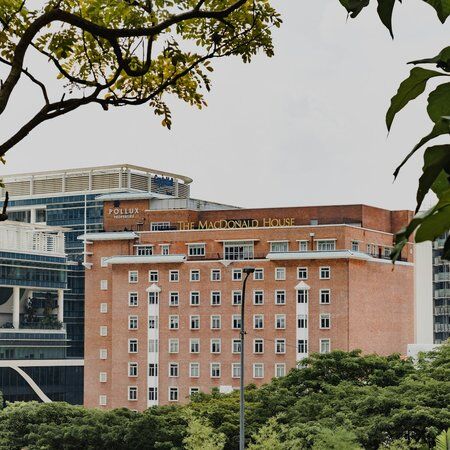
A Dark Past: MacDonald House in the 1960s
The Bombing
Beyond its architectural significance, Macdonald House has etched its place in Singapore's history books with a tragic underscoring. In 1965, the building was bombed as part of Indonesia's Konfrontasi against the Federation of Malaysia, formed in 1963, of which Singapore was a part.
“A senseless act of cruelty.”
The “Konfrontasi” (Confrontation) lasted from 1963-1966 and the MacDonald House explosion was the worst in a series of attacks orchestrated by Indonesian saboteurs during this time. According to the Straits Times newspaper, the bomb’s blast was so powerful that all the windows of all the buildings in a 100m radius were shattered, including car windows in the surrounding streets and car parks. Three people were killed and thirty-three were injured. This dark chapter in MacDonald House's history serves as a poignant reminder of the geopolitical turbulence of the region during that era.
Results of the Bombing
Investigations after the bombing of MacDonald House led to the arrest of two Indonesian marine commandos in their 20s. Dressed as civilians the two soldiers, Osman bin Haji Mohamed Ali and Harun bin Said, had left nitroglycerin explosives on the building’s mezzanine floor, near the lobby elevators. The marines were tried and hanged for their act of terrorism on 17th October 1968.
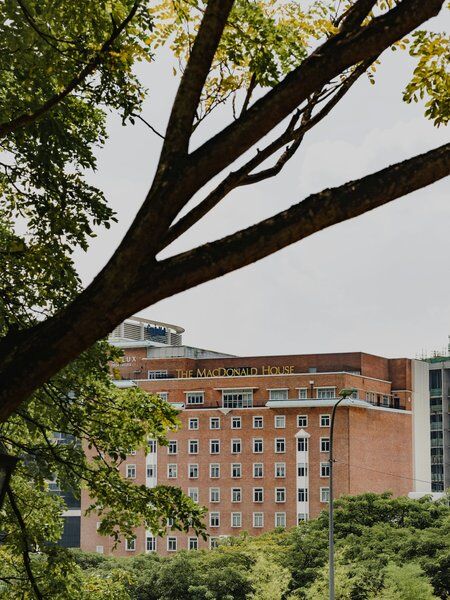
A Continued Symbol of Resilience
Reconstructing MacDonald House
In the aftermath of the bombing, Macdonald House became a symbol of resilience. In 2002, the building was put up for sale and purchased a year later. Then began a process of reconstruction costing S$12 million. The restored Macdonald House emerged as a testament to the nation's unwavering spirit and solidarity with Malaya. In 2003, its historical significance was cemented when it was gazetted as a national monument.
In 2015, on the 50th anniversary of the tragic bombing, a memorial was erected at Dhoby Ghaut Green. The memorial not only honours the victims of the attack, but the veteran soldiers and volunteers who defended Singapore during the Konfrontasi period. Today it is occupied by Citibank, beauty and wellness empire Expressions International, and the advertising firm McCann Worldgroup among others.
Explore Singapore with CityDays
The fascinating city of Singapore awaits - and there’s no better time to explore it than right now!
CityDays create fun, interesting and challenging trails around the world to help you immerse yourself in a city’s culture, history and quirks. We’ll show you hidden gems, share some fascinating facts and even offer you the chance to win prizes for your brilliance.
We also provide Singapore team building activities to help your colleagues have a seamless day of bonding, learning and fun!
Want to find out more?
Check out all our available activities in Singapore here and embark on an adventure you’ll never forget: CityDays awaits!
